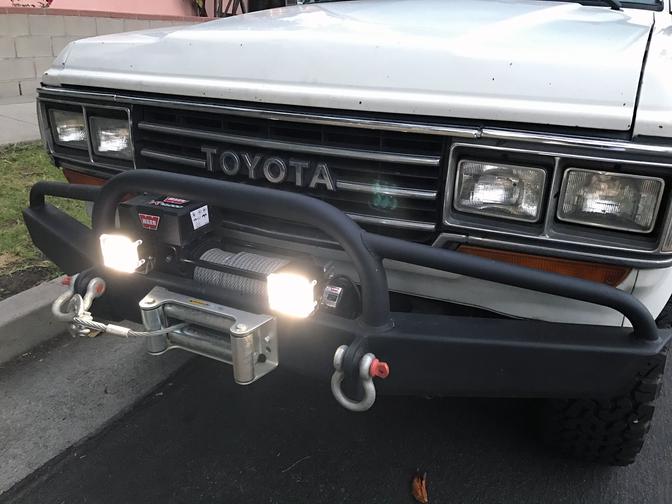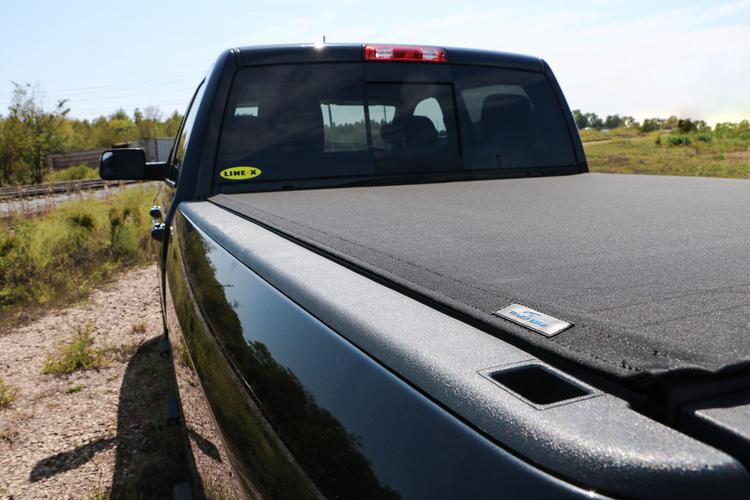Driving lights make
nighttime driving safer
by enhancing forward and peripheral vision, and they add value to your vehicle. Adding an extra set of more powerful lights to the front of your car—wired to come on when the high-beam switch is activated—provides additional lighting and improves overall vision for night driving.
Off-road driving lights are typically activated by a separate switch and not linked to your high beams. These are strictly for off-road night driving and not to be used on the street as they would blind any incoming drivers. These can be mounted to your stock bumper, off-road bumper, or to a roof rack.
Quality driving lights can cost thousands, and hiring a professional to install them bumps up the expense. Fortunately, doing it yourself is not as complicated as it sounds. With basic tools it can be accomplished in no time.
Which Light?
A set of lights with both a widespread (flood) and a long pencil (spot) beam is ideal. Determine your usage to select the right light. There are many different brands out there, so look for a reputable manufacturer. Study what the international rally and off-road racing teams use. You can be assured that those lights have been tested in the toughest conditions. Popular brands include
Rigid Industries
,
Hella
,
Nilight
, and
Lightforce
.
Driving lights are typically rated in watts, or power usage, and the higher the wattage, the brighter the light. There are three main types of driving lights: halogen, LED (light-emitting diode) and HID (high-intensity discharge). Each emits a different type of light. Halogens are less expensive than, say, HID lights, but the latter give off the brightest beam per watt of power. (Note: Check your local lighting laws to make sure these lamps are street legal where you live before you begin the installation.)
What You'll Need

Choose a suitable place on your vehicle for the lights. Some states have restrictions on where lights can be mounted, so contact your local road authority before you tackle this project. You might need to buy a light-mounting bar, available at auto retailers from around $40, which can be attached to your existing front fender.
Most driving lights will come in a kit of two lights, fitting hardware, and a wiring loom. Halogen lights are the cheapest and can cost between $50 and $500 for a kit. LEDs will be more expensive and will usually come as one light bar or a set of two smaller lights from $100 to over $1500 for a large light bar. HIDs are the most expensive, starting at around $500 to over $2000 for a set.
If your new driving lights don't come with a wiring-loom kit, you can purchase one separately from an automotive store for as little as $25. As an alternative to a wiring-loom kit, you can individually assemble a relay, a dashboard switch, a fuse (using the recommended size for your light), a T-piece connector and enough wiring to reach from the dashboard switch to your car's battery and then out to the driving lights. A
wiring diagram
can guide you.
Installation
To fit your new lights, follow these steps:
• Find a suitable place on your dashboard for the switch. The switch will activate the driving lights when you turn on your vehicle's high beams. Most vehicles have a pop-out-style compartment for mounting auxiliary switches, but you might need to drill a hole in the dash.
• Mount the relay in the engine bay, placing it as close to the battery as possible, while avoiding areas of excessive exhaust and engine hot spots. Drill a hole or use any preexisting holes to mount the relay.
• Run a ground wire from the relay to the chassis or earthing point. Ensure a good connection by filing off any paint, rust, or grit from the earthing point.
• Run a wire from one terminal on the dashboard switch through the firewall (following a preexisting loom or other appropriate hole) to the high-beam wire on your vehicle's headlamp (this can be located using a simple testing meter while the high beam is activated or by referencing the wiring diagram included in your vehicle's owner's manual). Use the T-piece connector to join to this wire.
• Run the appropriately colored wire out of the relay through the firewall and on to the other terminal on the dashboard switch.
• Run the wire from the relay to the driving lights. Each light should also have a ground wire connected to an earthing point or the chassis.
• Run the battery wire from the relay to the battery, with a fuse in between.
• Test to see if the driving lights are working on high beam, and also test the operation of the dashboard switch.
• Finally, adjust the light beams. This is best done at night so you can gauge the appropriate position of the lights for maximum visibility. Take some spanners and go for a drive. Find a long, quiet stretch of road and adjust the height of the beams to exactly where you want them. Tighten the adjusting bolts and you're done.
This simple job will save you money, make your car safer, and give you a little bit of DIY satisfaction.
This content is created and maintained by a third party, and imported onto this page to help users provide their email addresses. You may be able to find more information about this and similar content at piano.io




